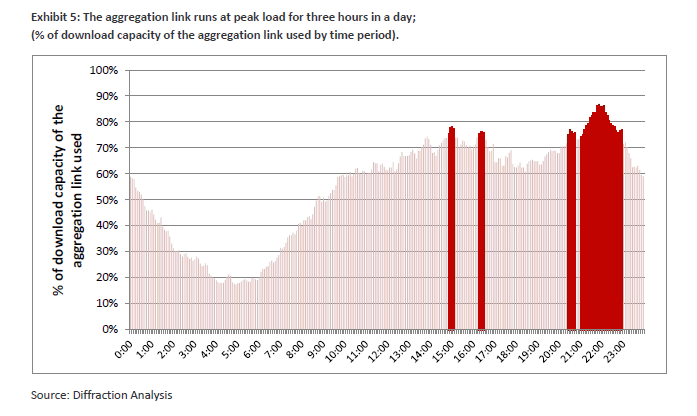
Web Hogs!
Written by Dane Jasper
December 2, 2011 | 3 min read
I have always felt that our customers buy connections from us to use them. Abuse them. Hog up big chunks of the web. Fill up those tubes! And to just generally consume what they are buying: a big fast broadband pipe, to use however they see fit.
As more and more broadband providers have instituted caps, I have continued to say that caps are really not necessary and that even if congestion was to be a problem, consumption caps are the wrong way to address the potential problem: congestion during peak time on the network slowing everyone down.
The capping of Internet consumption is a hot topic. In the Bay Area, SF Gate’s James Temple has written about caps, and the folks at Stop The Cap have been fighting Canada’s proposed usage based billing (UBB) scheme as well as the capping by U.S. providers.
My opinion is that caps make little technical sense, and I believe that the fundamental reason for capping is to prevent disruption of the television entertainment business model that feeds the TV screens in most households.
It’s common sense — if you are selling a service bundle to a household that includes a subscription TV service, it would make business sense if there wasn’t enough broadband capacity to replace it.
As of 2008, the Nielsen Co. says that the average American household consumes just over 8 hours per day of TV. To replace this with some sort of innovative and interesting new Over-The-Top offering, it would consume roughly 480 Gigabytes per month (based upon Netflix consumption at their current top “HD” rate.)
Keep in mind that this is the normative household TV consumption, so roughly half of homes view more than this! Add in day-to-day Internet use and clearly the 150GB to 250GB caps which are typical today are an effective blockade.
Because I’ve got a contrary viewpoint on caps, when Diffraction Analysis contacted us to ask if we would participate in a study of real-world usage we decided we should put our money where our mouth was. We ponied up with anonymous, summary consumption statistics for their use in this study.
The results they’ve come out with are quite interesting. Their report, “Do data caps punish the wrong users? A bandwidth usage reality check” is available for purchase on the Diffraction site, but the study author has also provided a summary on his Fiberevolution blog.
In it, he states that:
Data caps, therefore, are a very crude and unfair tool when it comes to targeting potentially disruptive users. The correlation between real-time bandwidth usage and data downloaded over time is weak and the net cast by data caps captures users that cannot possibly be responsible for congestion. Furthermore, many users who are “as guilty” as the ones who are over cap (again, if there is such a thing as a disruptive user) are not captured by that same net.
Their conclusion is reassuring, as it affirms our gut feelings about user behaviors and consumption: while heavy consumers may tend to be a contributor to peak load, their total consumption is a poor proxy for their impact during the potentially critical peak-load periods. We believe that if any bandwidth management were required, slowing the largest consumer down to the level of the next-largest and so on, in the specific moment during congestion conditions would be a more reasonable policy.
That said, note that bandwidth management is not used in our network. We upgrade links before congestion occurs.
What are your feelings about provider caps? Let us know in the comments!
Related reading:
“Bandwidth hogs” join unicorns in realm of mythical creatures – Ars Technica
The ‘Bandwidth Hog’ is a Myth – DSLReports

